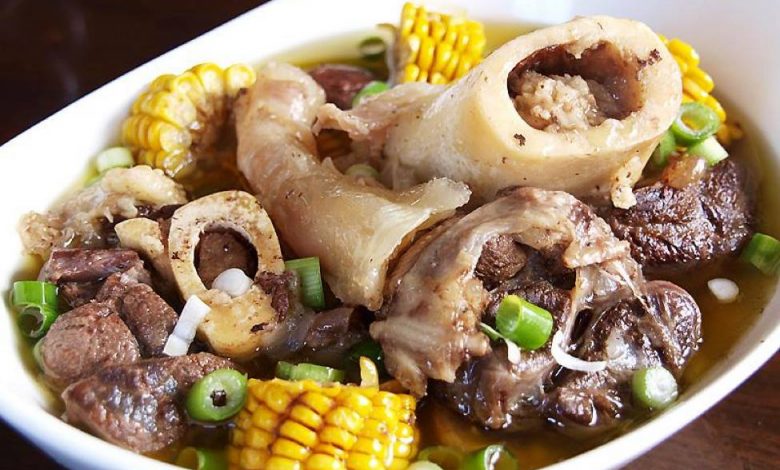
6 Filipino Comfort Food During The Rainy Season
The Philippines is a country with abundant rainfall. Either you’re going to love it or you’re going to hate it. The only thing that is certain is that you’re going to need some tasty Filipino food on these rainy days, preferably something with warm soup.
Today, we are going to list down six of the best Filipino comfort food that will warm you up during a cold, rainy day. Let’s begin!
1. Bulalo
Wherever you might be in the Philippines, it is without a doubt you have heard of this legendary comfort food that has been around for quite a long time. This delicious looking soup is traditional to Southern Luzon where cattle roam and graze freely, but other parts of the country also make different versions and types of bulalo. It’s first on the list because it is the first thing many think of when it is raining hard and you’re getting cold.
Bulalo is made from cooking beef shank and bones for long hours. This makes the soup more flavorful when the collagen and fat are mixed into the broth. There are different ways and ingredients to cook bulalo, but the traditional way of cooking it is in a large cauldron with corn, chayote, bok choi, plantain, onion, and ginger, and cabbage.
This wonderful dish is indeed a big bowl of protein and fiber, however, it’s also high in cholesterol so fair warning to those who have heart problems!
READ: Angel’s Burger, and their road to becoming “Burger ng Bayan”
2. Champorado
Another dish that can be a rainy season food trip is champorado. This godly meal is usually for breakfast, however, it can also be eaten any time of the day. The ingredients for this wonder meal is just glutinous rice, tablea, or cocoa powder. Topped with milk and it is already golden! Most Filipinos top it up with tuyo (dried salted fish) or pan de sal to counter its sweetness.
3. Ginisang Munggo
Ah yes, the Filipino comfort food for those who don’t have the budget for champorado and bulalo! It also goes by the name of Friday dish because it is usually free of meat. When paired with meat and other ingredients however, it becomes another delicious meal that will warm your stomach when it is raining hard outside.
FK’s Kitchen: 5 native ingredients that are hard to make
4. Sinigang
If you don’t like the meatier soup of the bulalo or the sweeter taste of the champorado, you can always go for another dish with a sour flavor that is truly heaven-sent: the sinigang.
If you are not a big fan of beef and you are opting for pork, then this is for you. This is usually prepared with pork belly and a variety of vegetables. Rice is a great option to pair it with like most dishes on this list. The standard vegetables used in sinigang are labanos, kangkong, gabi, okra, snake beans, onions, and tomatoes. It’s healthy and it is delicious!
There are also other versions of sinigang like the sinigang na hipon, a favorite in coastal towns!
5. Tinola
Can you even call yourself a Filipino if you haven’t yet tried this extraordinary dish? Made of chicken, green papaya, fresh spinach, and a ginger-flavored broth, this Filipino soup is both hearty, healthy, and tasty!
Again like bulalo and sinigang, tinola is traditionally served as a main dish for lunch or dinner. It’s very common to enjoy the dish with a cup of hot rice and fish sauce on the side.
6. La Paz Batchoy
Just thinking about this dish will make your mouth water! This is one of Iloilo’s must-try delicacies, this flavorful noodle dish is called La Paz batchoy to honor La Paz where it originated. But you don’t need to go to Iloilo of course. You can just recreate this amazing dish in your own home with some help from the internet.
It is made with egg noodles, pork innards, beef loin, chicken and shrimp stock, and topped with chicharon, scallions, and toasted garlic.
One bowl of steaming La Paz batchoy will truly warm up your rainy days!
Eating satisfying Filipino comfort food appropriate for the weather is not just an act of impulse. It is also a form of self-care and love. On top of that, it’s one way to appreciate our history and culture, which remains rich in culinary traditions. Kaon ta!




